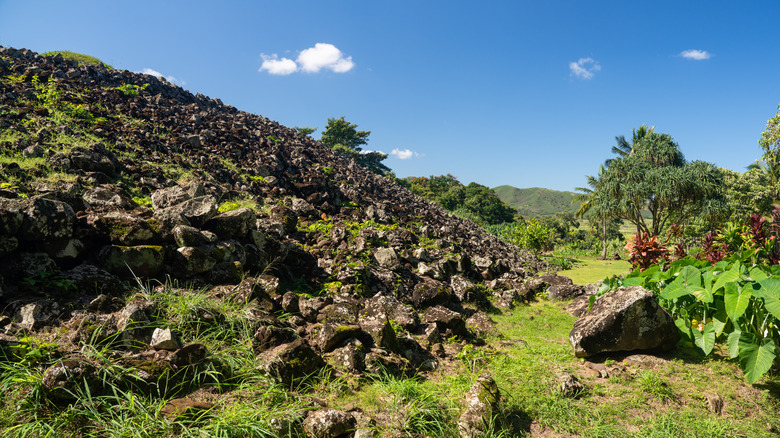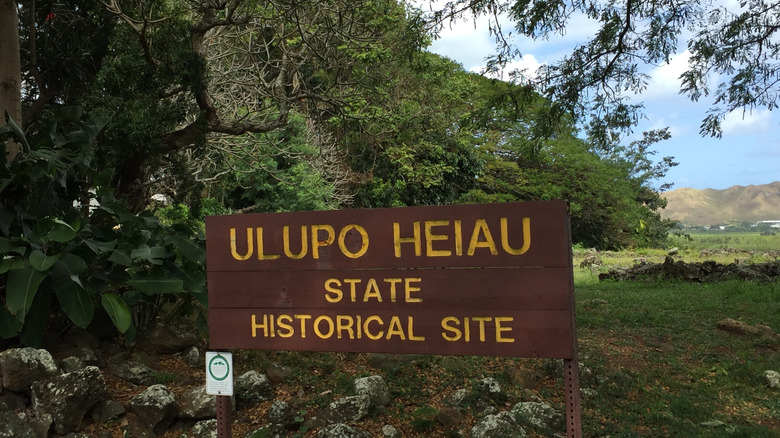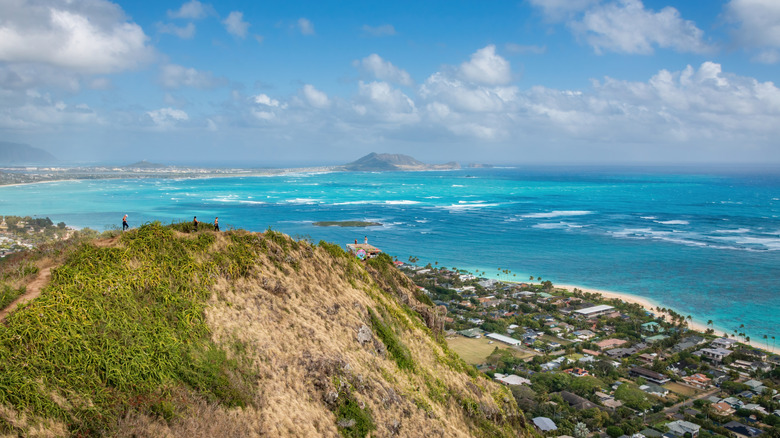Oahu's Most Sacred Temple Site Offers Breathtaking Views With Hawaii's Peaceful Energy
Hidden in the urban wildlife sanctuary of Kawainui in Kailua, Oahu, lies an ancient slice of Hawaiian spiritual history. The Ulupō Heiau Sacred Site is one of Oahu's most important historical temples. It's also the island's oldest heiau — a traditional Hawaiian place of worship where prayers and ceremonies were practiced by the native islanders for thousands of years and some still host spiritual gatherings and receive offerings to this day. Ulupō Heiau's location amidst the breathtaking views of the Kawainui Marsh make it a peaceful sanctuary to rest your mind and connect with what once was.
This open-air temple is made up of a huge, 140 by 180-foot stone platform, with several terraces and walls 30 feet high. It's believed that this structure was once a tall tower and was built by Menehune. In folklore, the Menehune were believed to be a mystical dwarf-like humans that inhabited the forests and possessed magical powers. In reality, the structure was likely built by the original people who lived on Oahu before the Polynesians settled in Hawaii around 300 to 600 B.C.
Ulupō was at its most powerful in the mid 18th century, when Oahu chiefs lived there and took advantage of the fish pond and access to the nearby canoe launch point. The site was abandoned after Oahu was conquered in the 1780s. In the past 50 years, it has been restored as a state monument.
What to do at Oahu's Ulupō Heiau Sacred Site
When you first arrive to the area, get the lay of the land by exploring the trails in the surrounding Kawainui Marsh Wildlife Sanctuary. Having once been used as a fishpond and crop-growing area by native Hawaiians around 900 A.D., this wetland is now a crucial habitat for endangered endemic birds and serves as natural water filtration and flood control for the nearby urban areas. Far removed from the buzzing tourist energy of Waikiki where you may have started your journey, you'll likely feel a powerful sense of peace, as the world stands still and silent around you.
Once you've gotten a feel for the area, you can visit the must-see highlight — Ulupō Heiau itself. It is believed that this site was built to spiritually protect the surrounding agricultural and fishing area of Kawainui, with ceremonies performed here to ensure the fertility of crops such as taro, sweet potato, and sugar cane. The remains of an altar, a drum tower, and an oracle tower you'll see amidst the rubble will take you back to a time when this site was the sacred spiritual center of the native people of the region.
How to visit Ulupō Heiau
To visit Oahu's sacred sight, you'll have to travel to Kailua, on the eastern side of the island. This town is about 30 minutes from Daniel K. Inouye International Airport (HNL) by car. You don't need to get far out of Kailua to visit the ruins, as they are located just behind the YMCA on 1200 Kailua Road. There's no fee, and you can visit at any time during daylight hours. While Hawaii enjoys a famously balmy climate year-round, spring and fall offer the mildest, least humid weather. Keep in mind that as of May 2025, Hawaii is adding a new tourism fee to your stay, though it will be small.
Kailua is the perfect base if you want a relaxed beach town right next to the ruins, but you can always stay in Honolulu instead if you prefer to be closer to urban action and amenities. If you do stay in Honolulu, make sure to add a visit to the nearby Spitting Cave, one of the world's best cliff-jumping spots. Kailua and its surrounding area are flush with verdant nature, so make sure to pay a visit to nearby Lanikai Beach and the Maunawili Falls Trail after you finish your visit to Ulupō Heiau. You can also check out nearby Kualoa Ranch, a beautiful Hawaiian nature reserve that is a must-visit for movie lovers. Soak it all in — you did travel all the way to one of the most geographically isolated inhabited places on Earth, after all!


